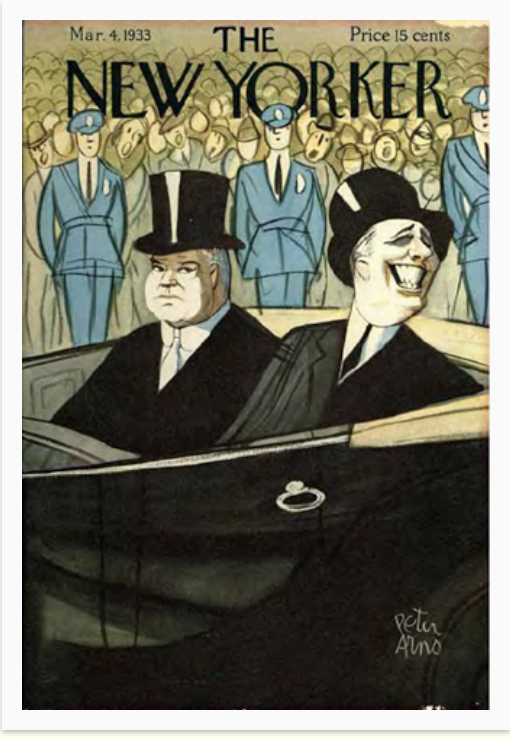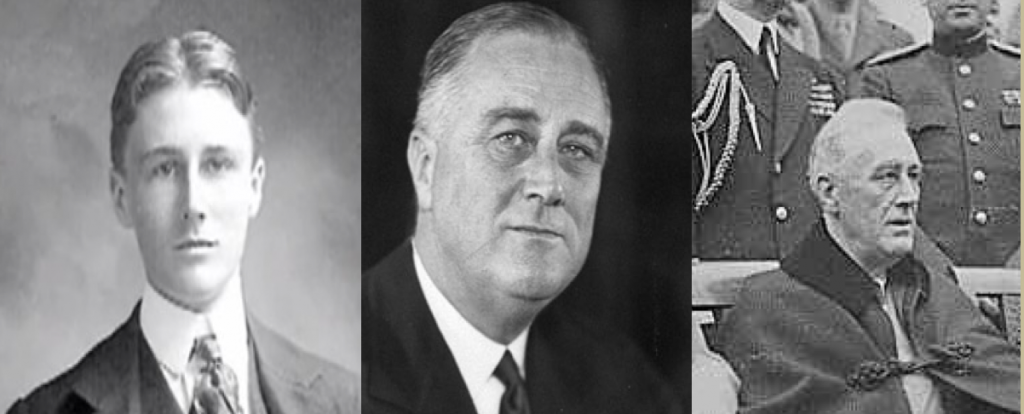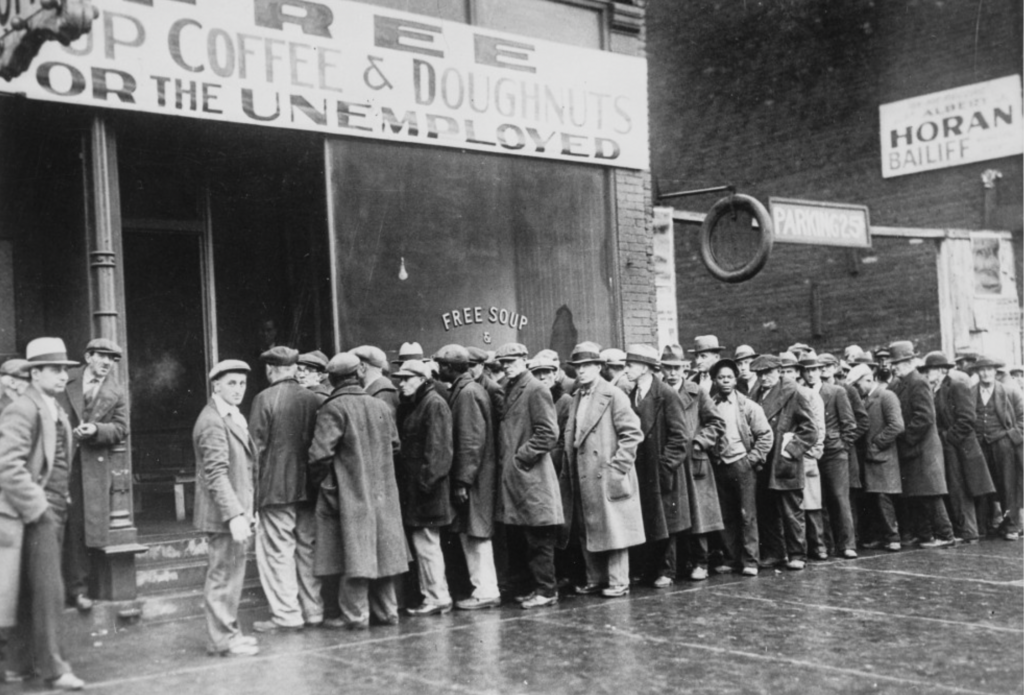Did the New Deal save American capitalism from itself?
American Yawp, Chapter 23: The Great Depression
- I. Introduction
- II. The Origins of the Great Depression
- III. Herbert Hoover and the Politics of the Depression
- IV. The Lived Experience of the Great Depression
- V. Migration and the Great Depression
- VI. The Bonus Army
- VII. Franklin Delano Roosevelt and the “First” New Deal
- VIII. The New Deal in the South
- IX. Voices of Protest
- X. The “Second” New Deal (1935-1936)
- XI. Equal Rights and the New Deal
- XII. The End of the New Deal (1937-1939)
- XIII. The Legacy of the New Deal
- XIV. Primary Sources
- XV. Reference Material
Image Gateway
Photographer Dorothea Lange was working for the Resettlement (Farm Security) Administration in March 1936 when she drove past a sign for a pea pickers’ camp along Highway 101 near Nipomo, California. She stopped and snapped some photographs. Her description for the series of six images read:
- “Nipomo, Calif. Mar. 1936. Migrant agricultural worker’s family. Seven hungry children. Mother aged 32, the father is a native Californian. Destitute in a pea pickers camp, because of the failure of the early pea crop. These people had just sold their tent in order to buy food. Most of the 2,500 people in this camp were destitute.”
Even though the photograph almost instantly became a national icon, nobody knew the identity of the woman or her children until she came forward in a defiant interview with the Modesto Bee in 1978, just five years before her death. Florence Thompson, it turned out, had been angry about the famous image and considered it misleading. She told interviewers she had never lost hope. “If I’d ever lose hope,” she told NBC News, “I’d never make it.”
For more information, see a discussion of the photograph on C-SPAN “American Artifacts” and listen to this 1979 interview with Florence Thompson and read this 2008 profile of the family by the Modesto Bee.
Discussion Question
- Compare Florence Thompson’s comments in 1978 to this caption on the “Migrant Mother” photograph from American Yawp: “In this famous 1936 photograph by Dorothea Lange, a destitute, thirty-two-year-old mother of seven captures the agonies of the Great Depression.”
Stock Market Crash
“On Thursday, October 24, 1929, stock market prices suddenly plummeted. Ten billion dollars in investments (roughly equivalent to about $100 billion today) disappeared in a matter of hours. Panicked selling set in, stock values sank to sudden lows, and stunned investors crowded the New York Stock Exchange demanding answers. Leading bankers met privately at the offices of J. P. Morgan and raised millions in personal and institutional contributions to halt the slide. They marched across the street and ceremoniously bought stocks at inflated prices. The market temporarily stabilized but fears spread over the weekend and the following week frightened investors dumped their portfolios to avoid further losses. On October 29, Black Tuesday, the stock market began its long precipitous fall. Stock values evaporated. Shares of U.S. Steel dropped from $262 to $22. General Motors stock fell from $73 a share to $8. Four fifths of J. D. Rockefeller’s fortune—the greatest in American history—vanished.” (American Yawp, Chapter 23, Sec. II)
In 1932, with the national unemployment average hovering around 25 percent, Black unemployment reached as high as 50 percent, while even Black workers who kept their jobs saw their already low wages cut dramatically. (American Yawp, Chap. 23, Sec. IV)
Insights from Growing Up by Russell Baker
On Relief (from chapter 11)
“The three of us set off eastward, passing the grocery stores we usually shopped at, and kept walking until we came to Fremont Avenue, a grim street of dilapidation and poverty in the heart of the West Baltimore black belt. ‘This is where we go,’ [Russell’s mother] said when we reached the corner of Fremont and Fayette Street. It looked like a grocery, with big plate-glass windows and people lugging out cardboard cartons and bulging bags, but it wasn’t. I knew very well what it was. ‘Are we going on relief?’ I asked her. ‘Don’t ask questions about things you don’t know anything about,’ she said.
‘Bring that wagon inside.’ I did, and watched with a mixture of shame and greed while men filled it with food. None of it was food I liked. There were huge cans of grapefruit juice, big paper sacks of cornmeal, cellophane bags of rice and prunes. It was hard to believe all this was ours for no money at all, even though none of it was very appetizing. My wonder at this free bounty quickly changed to embarrassment as we headed home with it. Being on relief was a shameful thing. People who accepted the government’s handouts were scorned by everyone I knew as idle no-accounts without enough self-respect to pay their own way in the world. I’d often heard my mother say the same thing of families in the neighborhood suspected of being on relief. These, I’d been taught to believe, were people beyond hope. Now we were as low as they were.”
FDR and the New Deal
1932 Campaign Newsreel (with rare footage showing FDR as vice-presidential nominee in 1920)


Franklin Delano Roosevelt served as US president from 1933 to 1945; the only American president elected four times
First New Deal: Relief & Recovery (1933)
- “Nothing to Fear” (March 4, 1933)
- Banking Crisis
- Alphabet Soup: TVA, CCC, AAA, NRA
- Fireside Chats
Second New Deal: Recovery & Reform (1935)
- Social Security & Unemployment
- AFDC (“No dole” vs. origins of welfare)
- WPA (“We Poke Along”)
- NLRB (Wagner Act)







